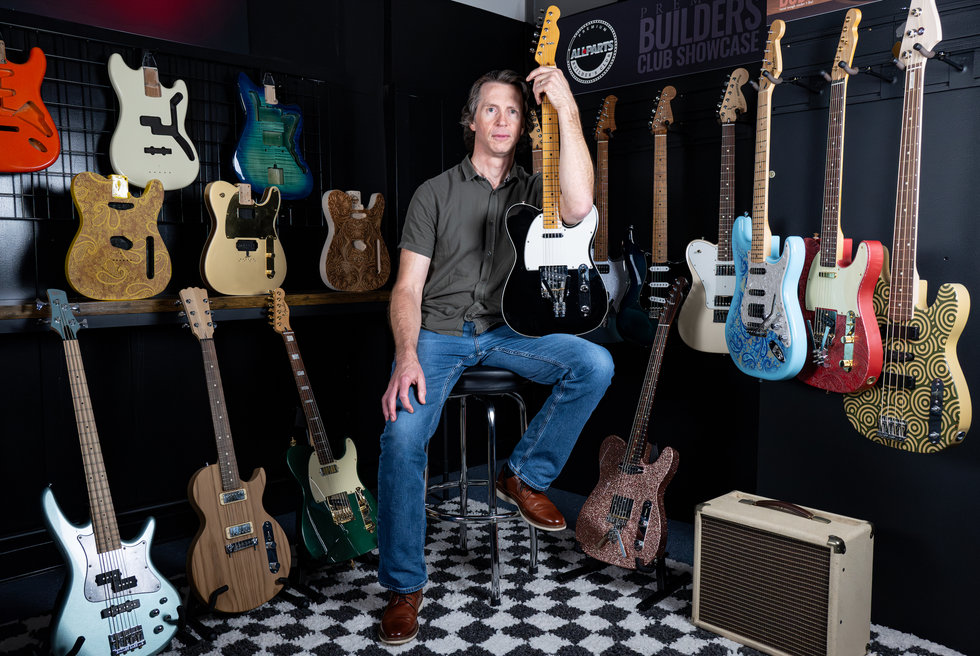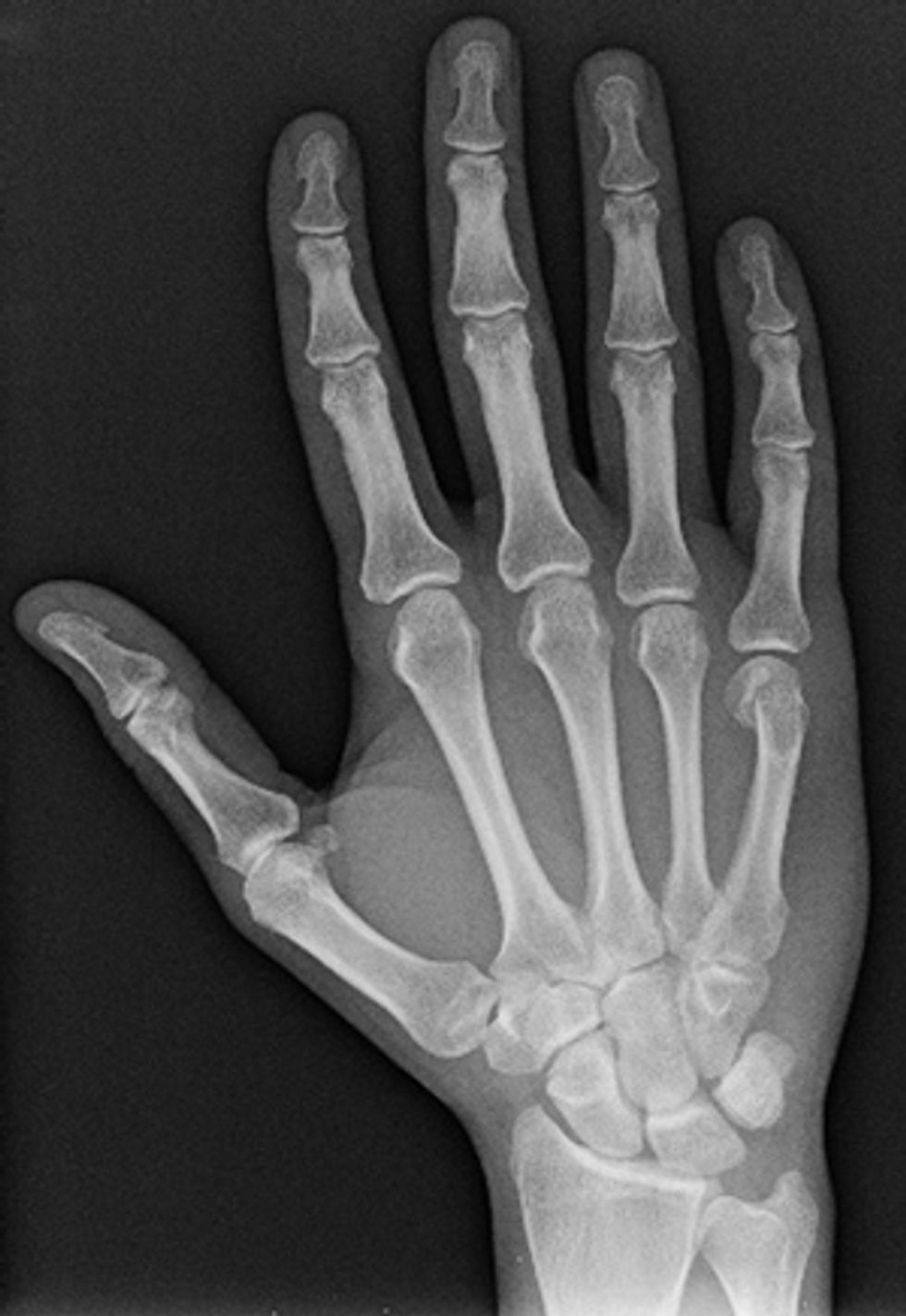
An x-ray of Dave Brewster’s “boxer’s break” to his right-hand knuckle.
It’s every musician’s nightmare to envision suffering significant injury to either hand. Whether it’s a bad sprain, a fracture, or a repetitive stress injury, the very idea strikes fear into our hearts and stokes paranoid fears about how well we’ll be able to play our instrument after the wound heals—or whether we’ll be able to at all.
Until the incident chronicled here, the only time I’d broken a bone was when I was 11 and fractured my ankle. I wore a cast for a summer, limped around on crutches, and basically felt like a moron both for breaking it and how it messed up life during those months. When it finally healed, the cast came off and I was running around my neighborhood again like nothing had happened.
Fast-forward 20 or so years, and I’m a professional musician at Quad Studios in Nashville, just a few days before Thanksgiving. Two nights before the session, the vehicle that my equipment was stored in was broken into, and around $6,000 worth of equipment was stolen—including my prized Gibson Les Paul Standard, a fully stocked Pedaltrain pedalboard, and my in-case-of-musical-emergency accessory backpack (aka “The Oh Shit Bag”).
Needless to say, I was in shock when I discovered my loss the next morning. I looked over the crime scene for a few minutes, then went back into my hotel, got in the elevator, and headed up to my room to get my phone so I could make the necessary calls.
While standing in the elevator, trying not to think about some criminal strumming my guitar or (more likely) selling it somewhere for way less than it was worth, I had a burst of rage and punched the wall without looking where I was punching or how close to the wall I was standing. It wasn’t the smartest thing I’ve done in my life.
My First Mistake
I immediately knew I was in trouble. My
hand—my right, picking hand—throbbed
with pain and began swelling instantly. Just
as painful was the thought of how I was
going to complete my recording session.
Luckily, I’d taken my Strat to my room the night of the robbery so I could play a little while I had the night off. At least I had one guitar and my amp to make it through the session, but I was mortified about the extent of the damage to my hand. I spent the night in my hotel room with my hand on ice and hoped for the best.
The following day, my hand still hurt and was very swollen—my ring- and pinky-finger knuckles were nowhere to be seen—but I was able to move my fingers. I figured that was a sign everything would be okay once the swelling went down, so I didn’t go to the hospital for an x-ray and attempted to play at the session that day.
Five-Fingered Delusions
I arrived at the studio early, got out my
Strat, and ran through a series of warmups
to see the extent of the damage to my
hand. Although I could do basic picking
exercises and scale sequences, I decided
against anything fancy or challenging, like
tremolo- or sweep-picking, and focused on
strumming, using downstrokes, and basic
alternate picking. Within reason, I was able
to perform what I wanted, so the recording
session began.
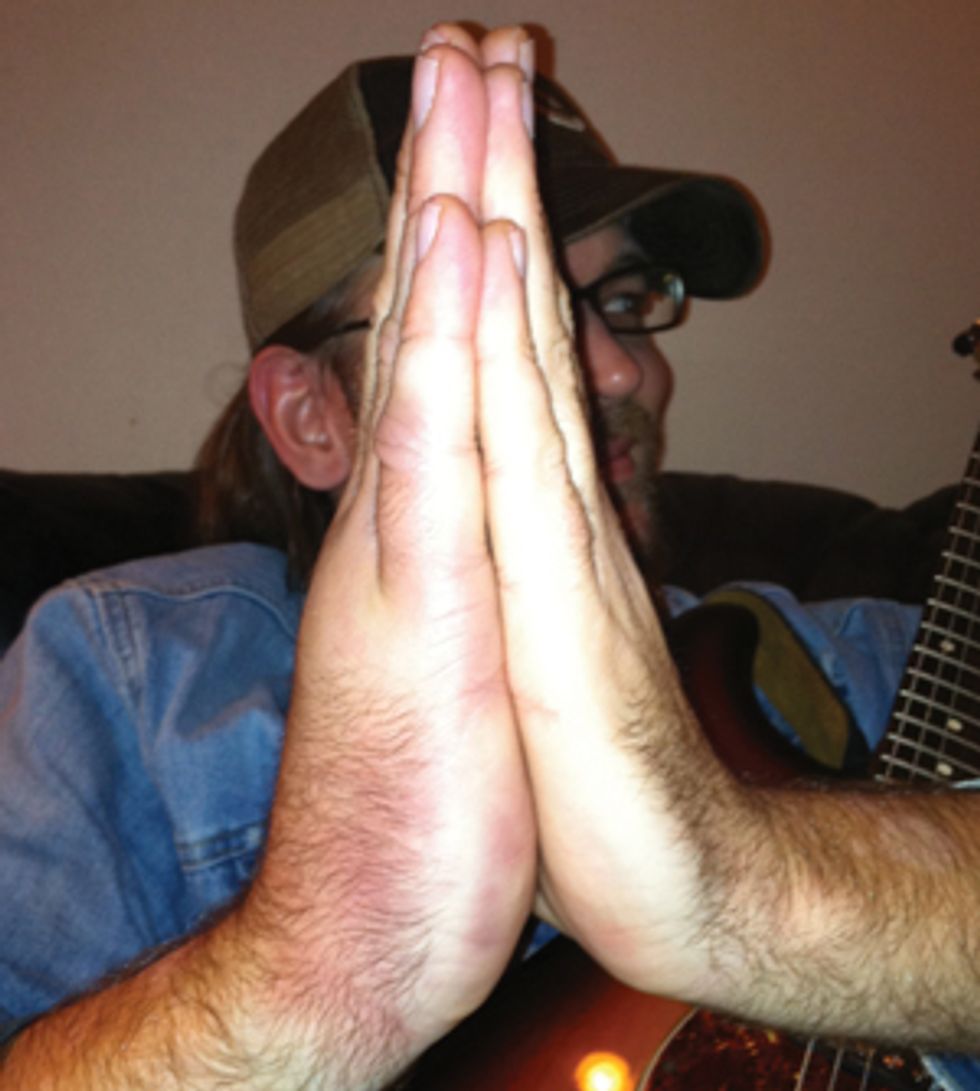
Brewster contrasts the painful poofi ness of his picking hand with his unharmed fretting hand in the studio after his “fight.”
Luckily, after I played along with the initial run-through of a song (“Time Bomb” by Jason Sturgeon) to help capture a good drum take, I had a break for a couple of hours. Second guitarist Brett Houchin and the session bassist re-recorded things, worked with tones, and tightened their parts. This gave me more time to assess damage and see what I could and couldn’t perform.
Still under the delusion that I could self-diagnose my malady, I figured if I could pluck a series of harmonics with my index and pinky fingers, it meant my hand wasn’t broken and that I’d eventually be okay. I sat there, guitar on my lap, debating whether to attempt it or not—there was still a lot of pain.
I positioned my hand and plucked the high E. It resonated quietly from my unamplified guitar.
I breathed a sigh of relief.
Then I double-dog dared myself to perform a series of plucked harmonics, ending with a Lenny Breau-style harp harmonic across the notes of an E9 chord.
I could do it! I knew my hand couldn’t possibly be broken … knew I would be fine in time.
After a few hours, it was time to lay down my rhythm parts, fills, and possibly a solo. Everyone in the studio was aware of what I’d done to my hand. I cruised through the rhythm parts with little to no trouble, and even added a new part during the outro of a tune.
When it came time for the solo, I hadn’t worked anything out beforehand, but I could hear what I wanted to do in my head. Although I could almost pull it off, my injured hand held me back. It was getting late and it was Thanksgiving the next day, so we called it a day. We needed time to get back to our hometowns, and my hand needed time to heal. We decided to finish the song sometime after the holiday.
Much to Be Grateful For
I nursed my hand as much as I could on
Thanksgiving Day. I was surprised when I got
a frantic phone call during the meal—my stolen
guitar had been listed for sale on Craigslist!
I wound up going back to Nashville the following morning and, miraculously, the police recovered my Les Paul—but that was all. All my other gear was still missing. Still, I thought I would never see my Paul again, so I was beyond grateful.
The first thing I did when I got home was remove the strings, give her a good cleaning, and slap on a new set of strings. I felt violated, and I couldn’t stand the thought of there being any remnants of the thief—fingerprints or dust or whatever—on there any longer.
I carefully played it and held it for a few hours. Under normal circumstances, I would have unleashed a guitar-mageddon jam session, but my picking hand was in no shape to perform much for an extended period of time.
Before long, I found out there was a deadline for the song we’d been in the midst of recording, so I needed to head back to Nashville. The problem was, my hand looked and felt just as it did the day of the incident. I started to worry, and I finally went to the hospital for an x-ray.
It was broken.
The Road to Recovery
I had an hour-long wait between getting
x-ray results and talking to the doctor about
the plan for my hand. My mind raced
through every conceivable variable: I wondered
how severe it was, what the long-term
effects might be, and what it meant for
my future as a musician.
The doctor assured me I would be fine in a matter of weeks. I had what’s known as “boxer’s break”—a slight fracture just past the knuckles. I didn’t need a cast or surgery, I just had to wear a removable hand brace for a few weeks.
After telling the doctor what my profession is and that I needed to finish a recording, I asked if I could continue to play guitar during the healing process. I expected the worst possible news, but to my surprise he said playing guitar—in moderation—would actually be good for my hand. I breathed yet another sigh of relief, then went home, packed my bags, and tried to rest my hand as much as I could before the trip back to Nashville.
Back at the studio, I was turbocharged. I knew I had to use my beloved, recently recovered Les Paul for the session, and I was ready to nail the solo that I’d struggled with less than a week before.
It only took two or three takes before I’d captured what I wanted for the solo. I also tracked some fills and a few slide parts. The song turned out great, and I felt a huge sense of accomplishment and relief as I left the studio that day. My hand was going to be okay, my guitar was back, and the song was finished. I felt vindicated and revitalized.
After consulting with my doctor, I waited a few days before picking up a guitar and spent some time coming up with a physical therapy regimen—a custom exercise routine that I’d use to rehabilitate my hand over the next several weeks. Here’s what I came up with.
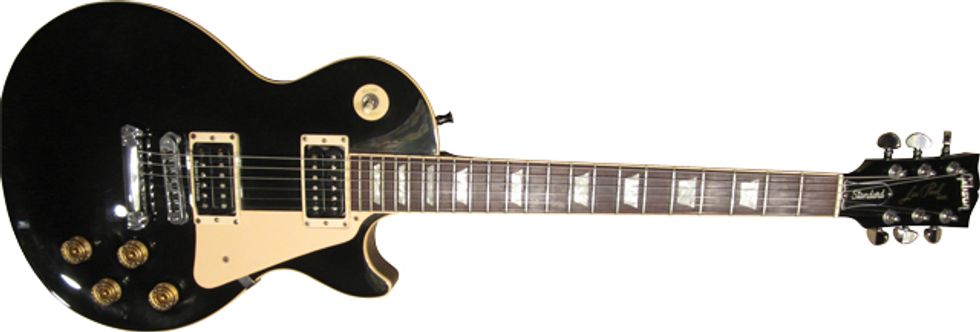
Note: If you have a hand injury, consult a physician before following any part of this regimen.
Phase I: Fingerpicking
Warm Up: open-String Plucking
My warm-up is the simplest thing I could
imagine playing with a broken hand—fingerpicked open strings. I couldn’t stop
thinking of the intro section to Metallica’s
“Nothing Else Matters.” Fig. 1 shows the
variation I played to begin my recovery. It’s
very easy, but not when you’re injured.
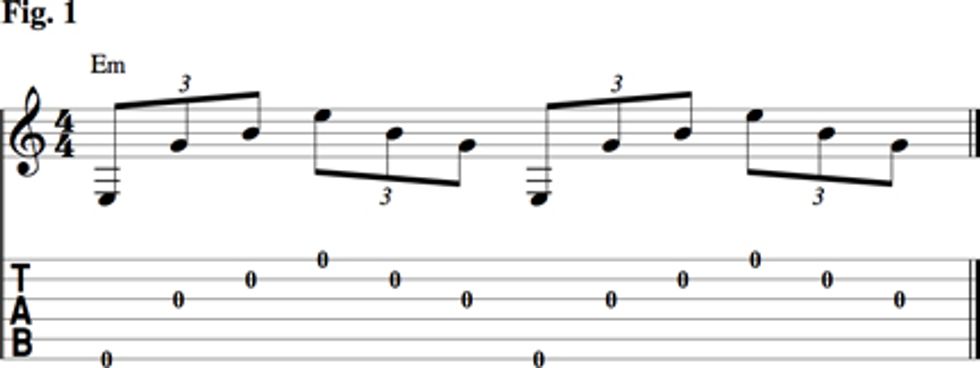
Arpeggios
I also practiced fingerpicking exercises from
Mauro Giuliani’s 120 Arpeggio Exercises,
which is required learning for pretty much
any classical guitar student, but also great
for any guitarist interested in developing
a solid fingerpicking technique. It begins
with basic arpeggios using a simple C–G7
progression, but things get crazy and technical
pretty fast as you move through the
exercises. By the end, you’ve exhausted just
about every conceivable pattern one could
perform with the progression. Fig. 2 is a
great place to start.

Simple Songs
Next, I played the fingerpicked sections of
Kansas’ “Dust in the Wind” several times—it was a good test to see if my hand was up
to the more musical, less rote passages of an
actual piece of music. I found that I could
do it, but much slower and with more caution
than I’ve ever played this classic tune.
Fig. 3 on pg. 135 shows a similar Travis-picking
exercise that will also do the trick.

Slow and Steady
Over the first several weeks, I used these
ideas and others to slowly regain strength in
my right hand. My starting tempo for each
exercise was a turtle’s pace, so be sure to
start slow and pay attention to the minutiae
and how you might be able to improve the
overall sound and execution.
Phase II: Flatpicking
Cowboy-Chord Arpeggios
The next area I focused on was picking
technique and right-hand control. Again,
I began slowly and comfortably, with exercises
that allowed me to focus less on what
my fretting hand was doing and more on
every movement of my picking hand. The
first exercise was a simple one I’ve used
with beginning guitar students for years.
I later expanded the basic concept into a
book called Power Picking (centerstreamusa.
com), but it involves taking a basic
“cowboy” chord—like a G major—and
turning it into a collection of melodic exercises
that are pleasing to the ear and great
for perfecting picking technique.
Fig. 4 is straight from my book. Play
through the exercise using only downstrokes,
then try it with alternate picking
(down-up-down-up).
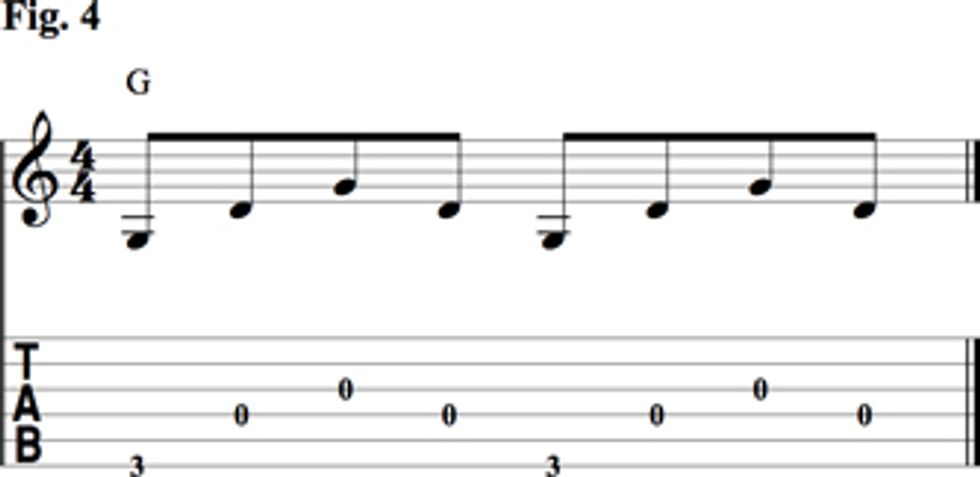
Scale-Based Arpeggios
Scale-based exercises are also extremely
useful. My “Suicide Laps” exercise (Fig. 5)
is named after a series of running exercises
from my high-school gym class, and it
involves playing the first two notes of an
A minor pentatonic scale, starting over
again and adding the third note, working
your way back down to the first note, then
working your way back up through the
scale to the fourth note, then back down
again, and so on. To really let out your
sadistic inner gym teacher, follow the rule
that says you have to start the whole exercise
over again if you make a mistake or
miss a note. It’s great for disciplining your
concentration abilities—especially after
you apply it to more complicated scales,
modes, and fingerings across the fretboard.
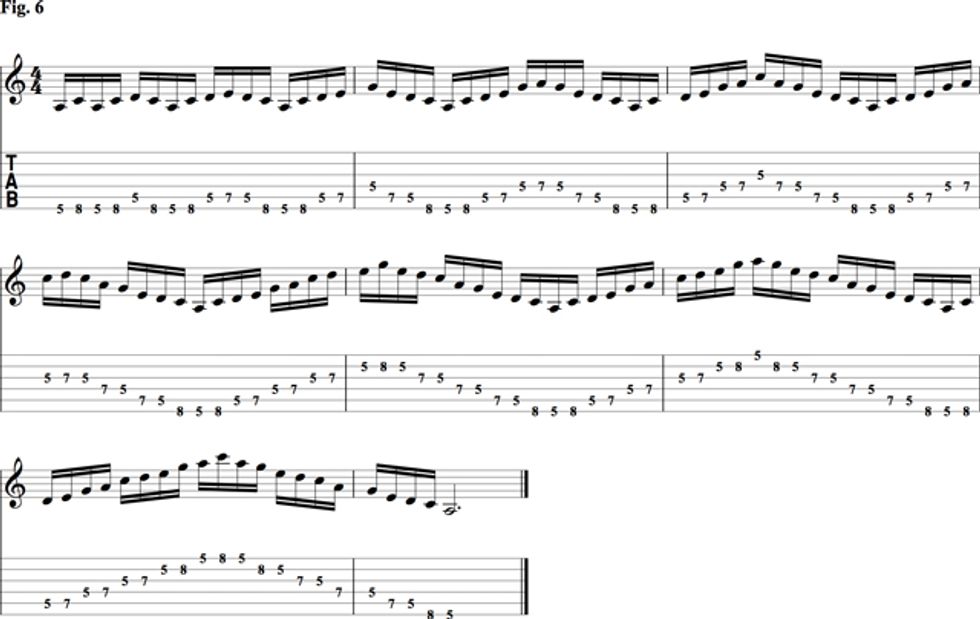
After having his Les Paul stolen and breaking his hand in frustration, Brewster and his remaining Strat managed to still lay down tracks for Jason Sturgeon’s
“Time Bomb.”
Lessons for Life
Hopefully, you’ll never be foolish enough
to punch an elevator or unlucky enough to
suffer a serious injury to your most valuable
assets as a musician. But the exercises shown
here can still be a great starting point for
developing strength, accuracy, dexterity, and
even some compelling musical ideas.
Hand-Injury Prevention Q+A
By Dr. Otto W. Wickstrom III, M.D.
What are some basic things musicians can do to help avoid injuries
such as carpal tunnel syndrome or repetitive strain injury?
Taking frequent breaks is the most important—even 30 seconds to a minute
can make a difference. Five-minute breaks are ideal. And gradually increase
your playing time—don’t take two months off and then try to play for four hours
straight. Anti-inflammatory medications such as ibuprofen can be your friend,
too, but beware of stomach and kidney problems that can arise if you take too
many. To help avoid this, always take them with food.
What are some warning signs that you might be developing or have a
hand or wrist condition?
Pain! Don’t ignore it or try to play through it. Numbness, a tingling in your fingers,
or having your hand “fall asleep” at night are the first signs of carpal tunnel syndrome.
See a doctor if you regularly experience these symptoms.
What are the most common types of treatment for hand and wrist conditions
such as carpal tunnel syndrome?
First, a wrist splint at night and nerve-gliding exercises. Next comes a steroid
injection, which is very helpful if done appropriately. Surgery is performed when
symptoms become constant and there’s no relief from previous treatment. Again,
do not ignore pain, because your symptoms can become permanent if they’re not
treated. A nerve that is pinched can die if it remains pinched too long, and you
can’t fix a dead nerve.

David Brewster is an honors graduate from the Atlanta Institute of Music who has authored several books available from Hal Leonard, Cherry Lane, and Centerstream. He is currently touring and recording with country-rock artist Jason Sturgeon. He would like to thank Jason Sturgeon, Dr. Wickstrom, Detective Holton, Scott and Julie at Jim Dunlop, and everyone else who helped him through his recovery. davidbrewstermusic.com


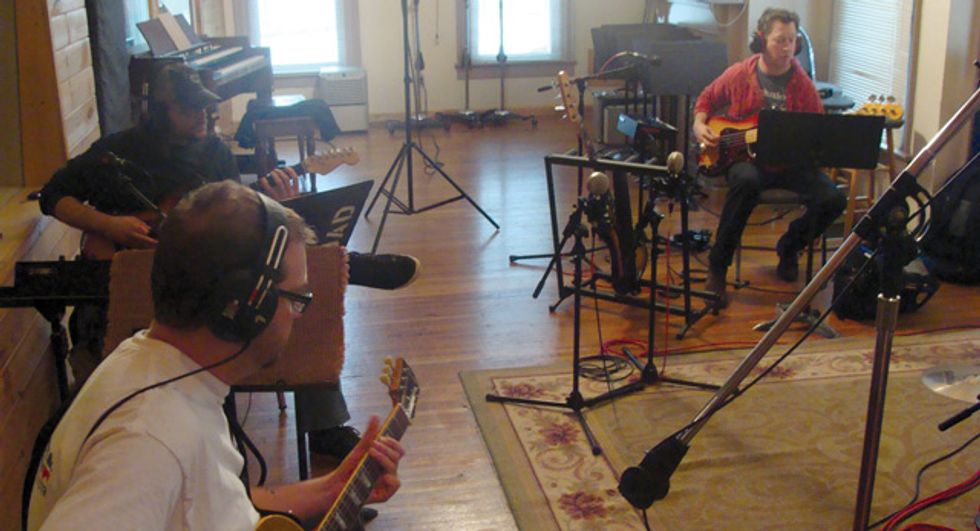
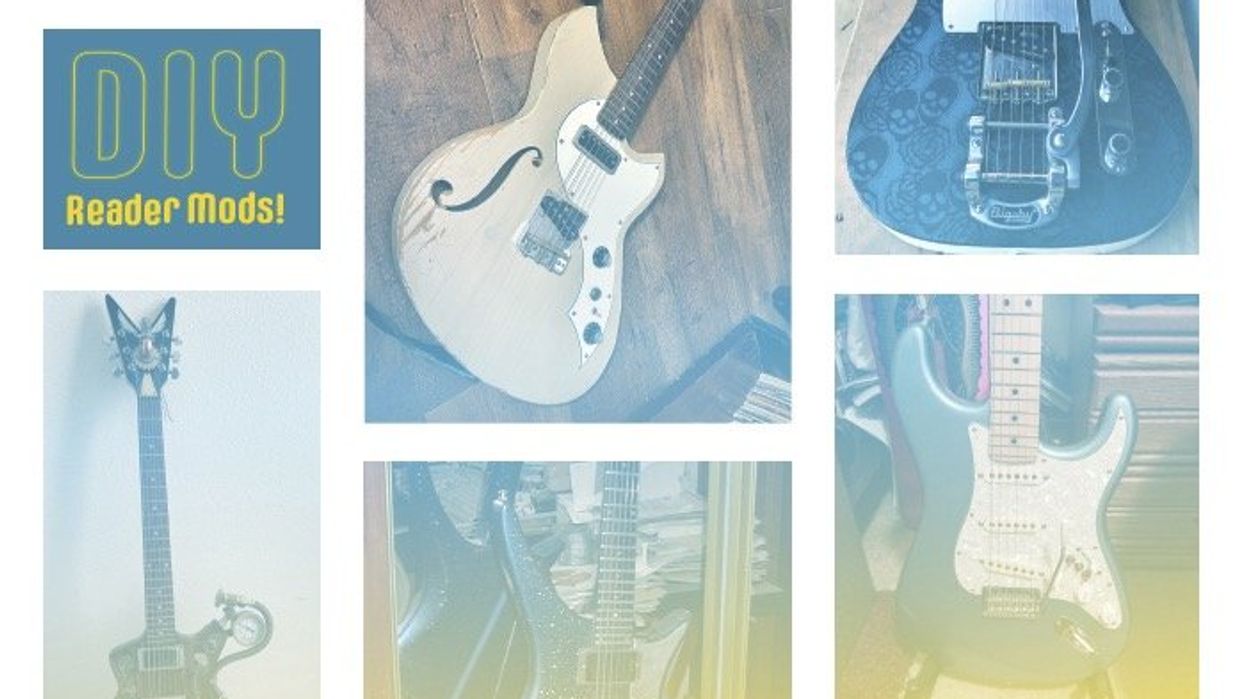
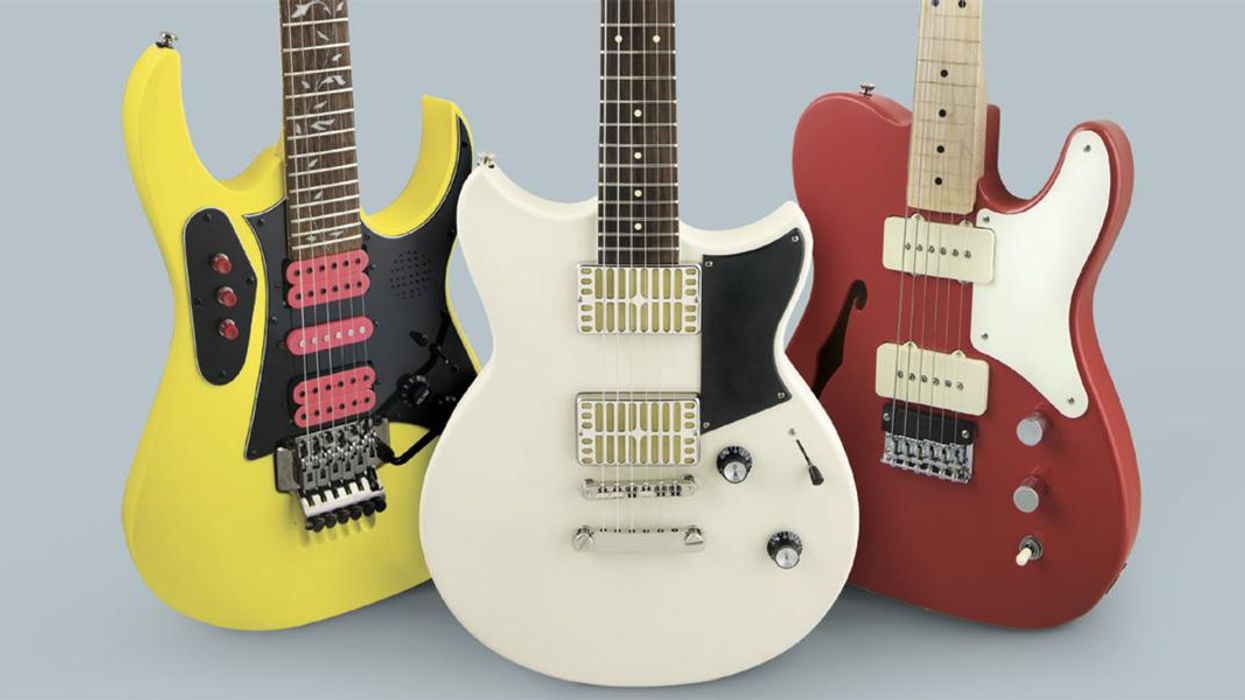
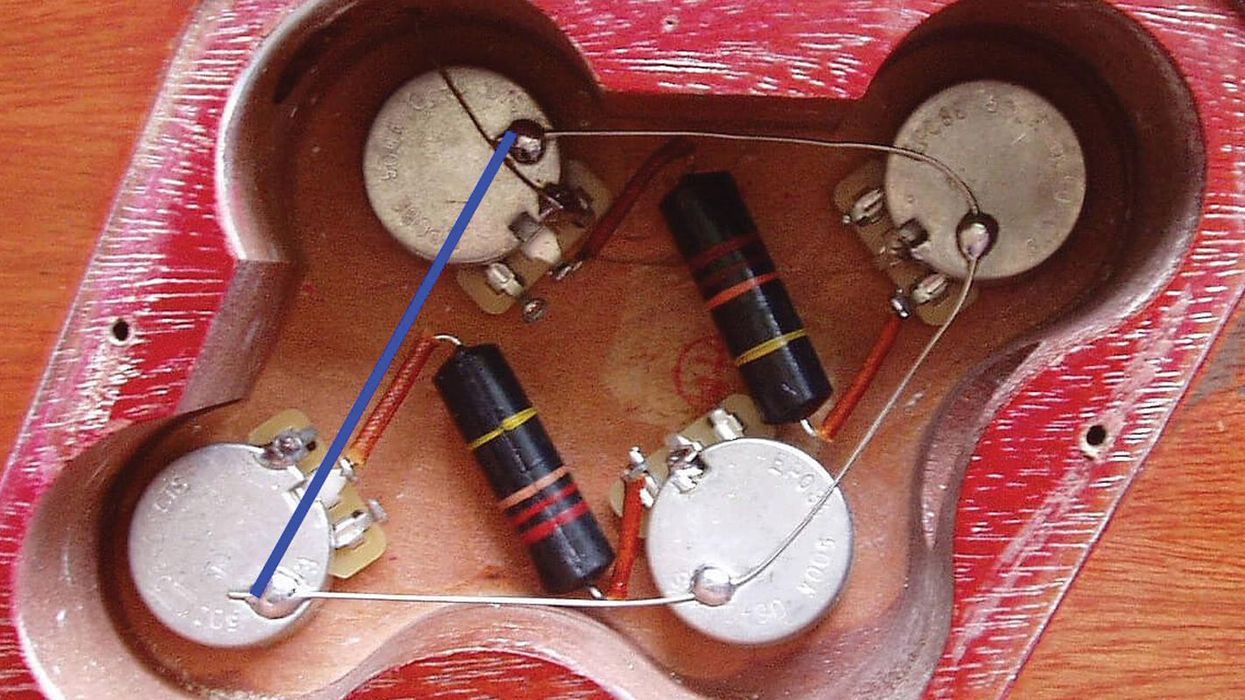
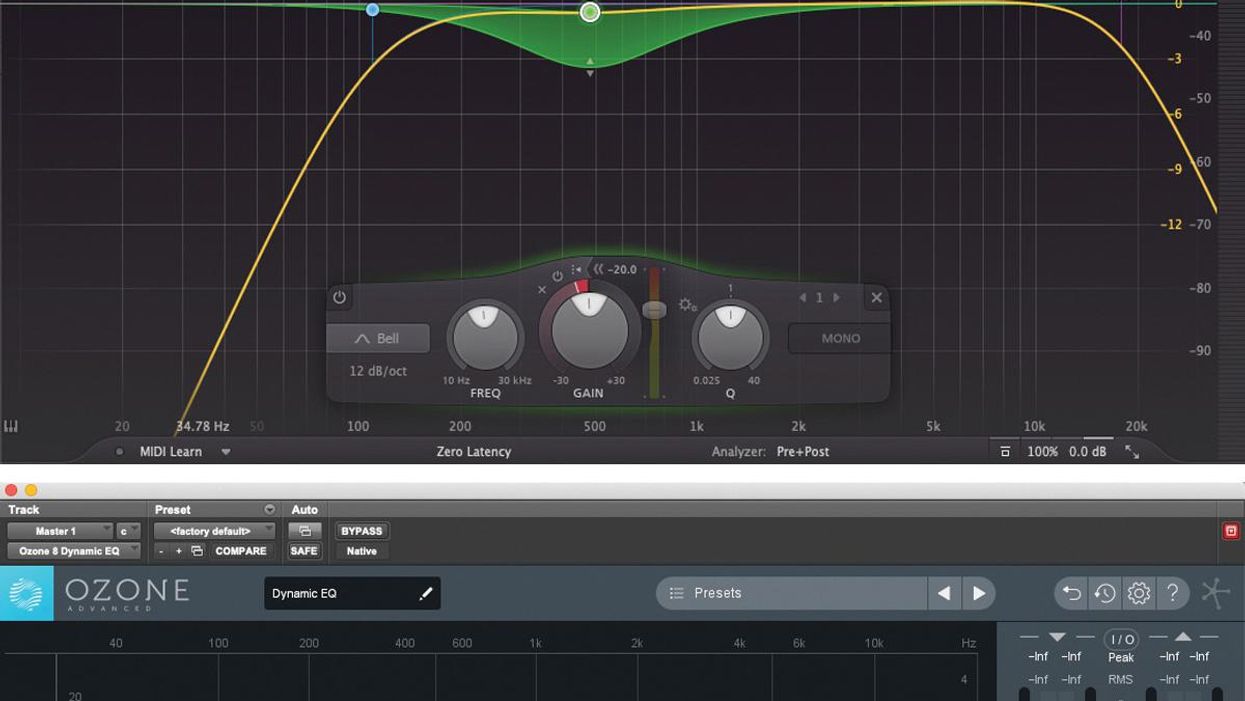


![Rig Rundown: Russian Circles’ Mike Sullivan [2025]](https://www.premierguitar.com/media-library/youtube.jpg?id=62303631&width=1245&height=700&quality=70&coordinates=0%2C0%2C0%2C0)










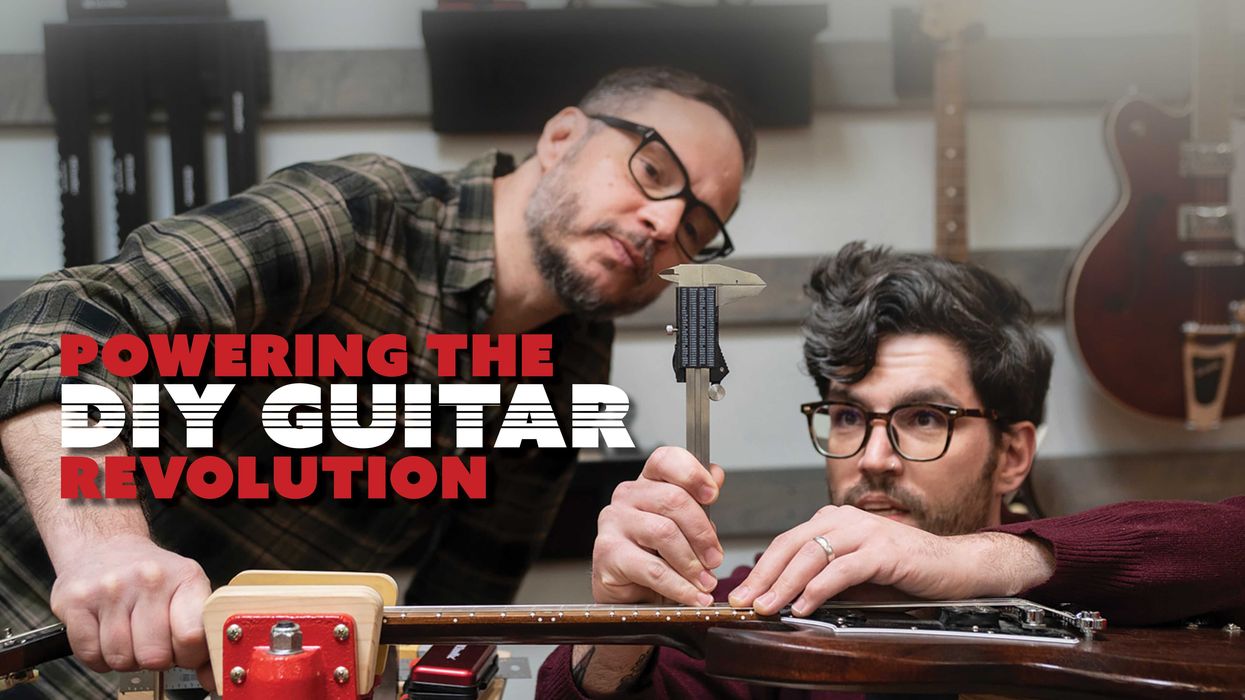
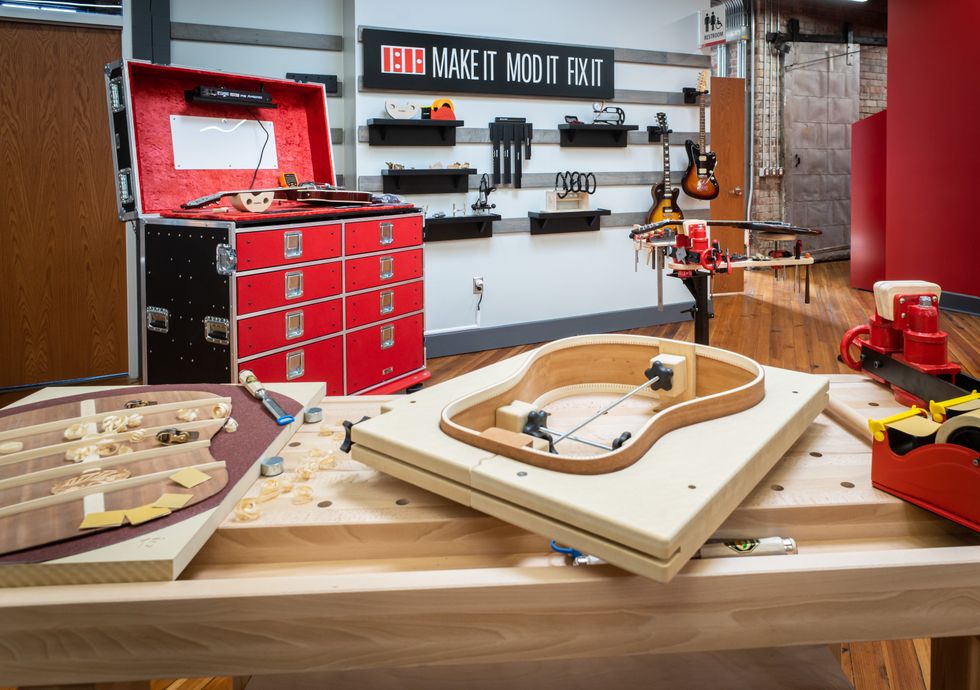
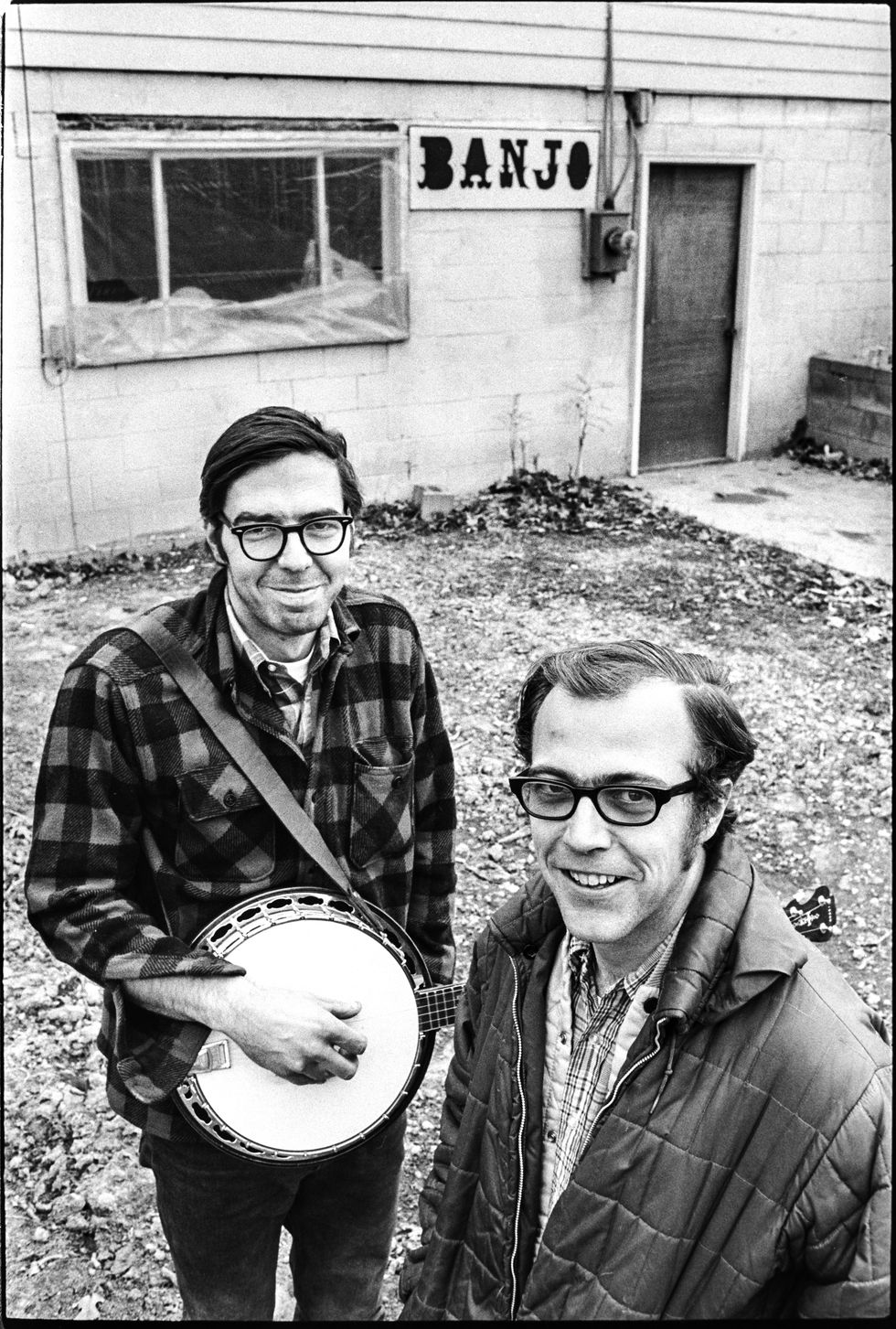
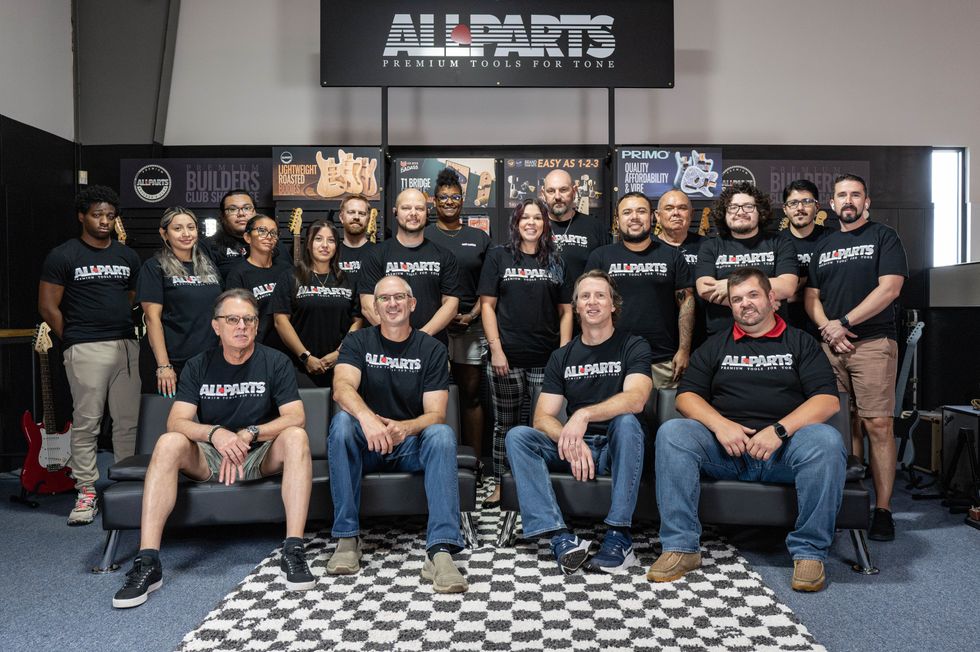 The Allparts team at their Houston warehouse, with Dean Herman in the front row, second from right.Photo by Enrique Rodriguez
The Allparts team at their Houston warehouse, with Dean Herman in the front row, second from right.Photo by Enrique Rodriguez